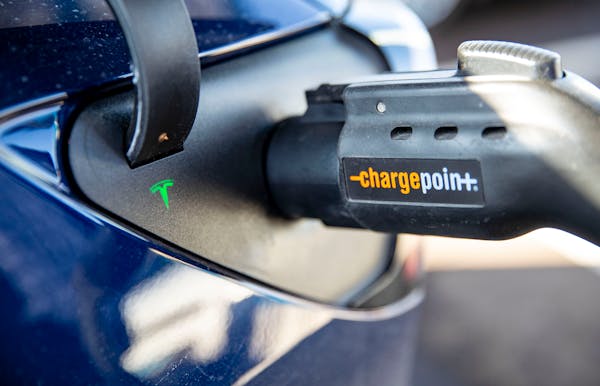Minnesota will build 13 fast charging stations for electric vehicles on highways around the state with the last of the Volkswagen settlement money it is set to receive.
The Minnesota Pollution Control Agency unveiled its plan for how it will spend $14 million — the final round of the $47 million settlement owed to the state after the car-making giant was caught cheating federal emission standards for years.
About $2 million will go to building the new charging stations under the plan. The bulk of the remaining money will be spent helping school districts replace about 50 school buses and companies replace dozens of diesel trucks and other heavy equipment.
Under the terms of the settlement, the state is allowed to spend up to 15% of the money on charging stations. By the time the final round of spending is over, Minnesota will have hit that maximum of about $7 million. The state has already installed 22 fast charging stations along highway corridors as well as dozens of smaller chargers in parking lots of grocery stores and other public places.
The goal is to reduce range anxiety, especially in rural areas, said Rocky Sisk, the project leader for the Minnesota Pollution Control Agency.
"Gasoline and diesel vehicles had a 100-year head start on electric vehicles," Sisk said. "It's going to take some time to catch up on that."
Minnesota started receiving the money in 2018. It set benchmarks then for how many tons of greenhouse gases and nitrogen dioxide pollution it planned to eliminate with the settlement cash. The state is well on track to meet those goals. It's already more than doubled its original projected cuts to fine-particle pollution and may end up exceeding its goals for reducing greenhouse gas and nitrogen dioxide pollution.
The biggest cuts have come not from electrification, but from replacing older diesel engines with more efficient ones, according to the state's data.
New diesel trucks and other heavy equipment produce about 95% less nitrogen dioxide and fine-particulate pollution than diesel engines built before 2010, according to the agency. In the case of school buses, diesel models also cost about a third of electric-powered buses, Sisk said.
The state has been trying to balance investing in electric vehicles and equipment with chasing the immediate emission reductions from cleaner diesel engines, he said.
Other major reductions were found from relatively cheap investments.
The state will spend a few hundred thousand dollars helping railroad companies install generators at about a dozen rail-yards. The generators will allow the companies to shut off giant diesel engines that sometimes idle and run for 24 hours a day to keep the locomotives warm and functioning.
"The big thing is the technology is there now to do this," Sisk said. "Train companies are looking at it. We want to jump-start this and get more people involved."
The state has already tested it at a couple sites and pollution regulators have been wowed by the results, he said.
The dozen 50-horsepower generators are expected to cut more emissions than eliminating hundreds of old diesel buses, trucks and other heavy equipment. They'll reduce more than 10,000 tons of greenhouse gas emissions and keep thousands of tons of nitrogen dioxide from billowing into the air.

Want to share info with the Star Tribune? How to do it securely

'Safe recovery sites' would offer syringes, naloxone and more to people using drugs. The plan could be in peril.
New Minnesota GOP leaders seek peace with party's anti-establishment wing

Who is Republican Lisa Demuth, Minnesota's first House speaker of color?

